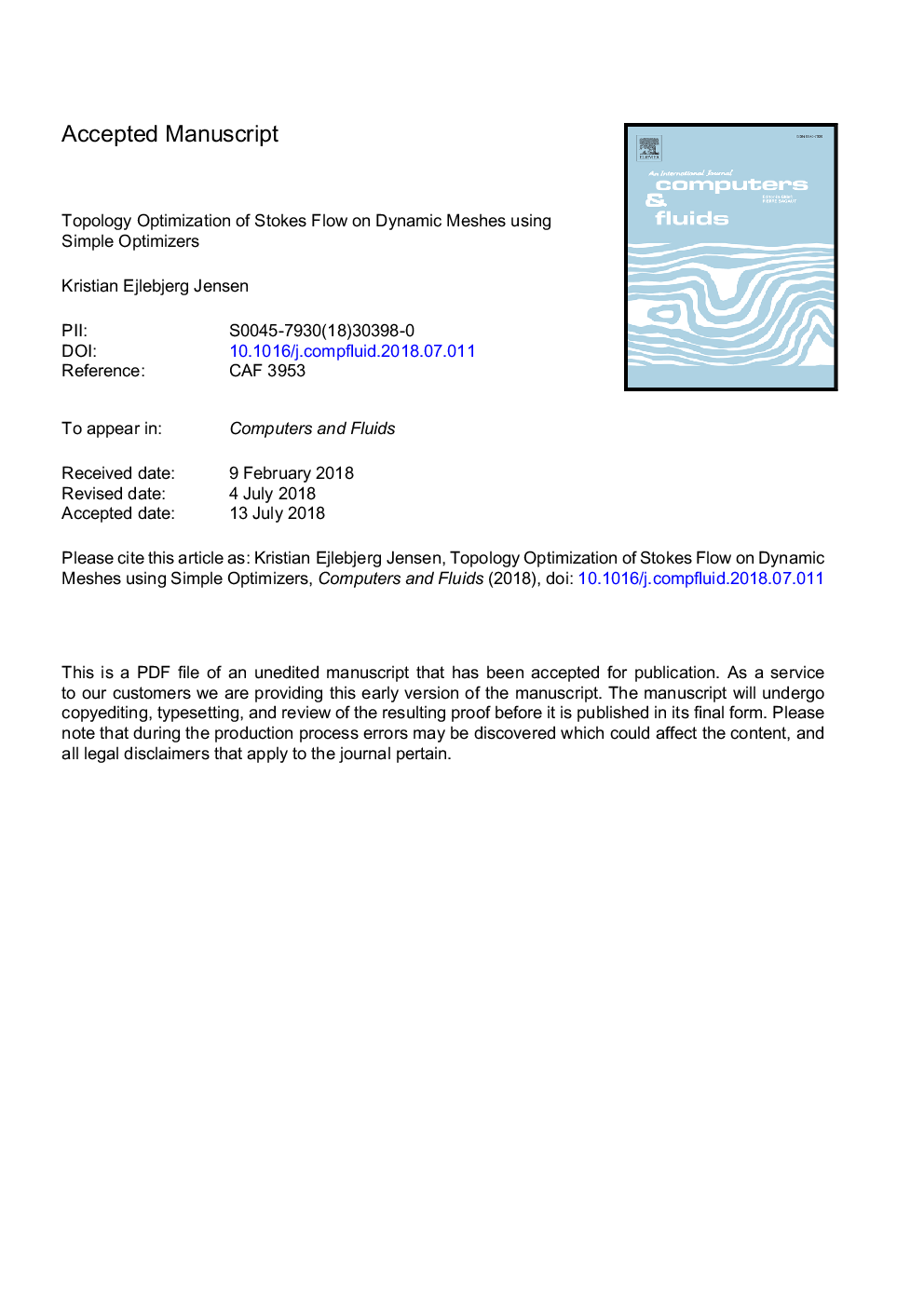| Article ID | Journal | Published Year | Pages | File Type |
|---|---|---|---|---|
| 11003775 | Computers & Fluids | 2018 | 22 Pages |
Abstract
We demonstrate that anisotropic mesh adaptation allows for a better description of solid domains than what is often seen in topology optimization of flow problems. This is due to the fact that the physical length scale related to the Brinkman damping term can be efficiently resolved by the non-uniform meshes. We show that the methodology can be applied to a draining problem, which can give arbitrarily complex designs. We use the optimality criteria method as optimizer for this problem, and we also use it to solve a classical drag minimization problem. Finally, we consider the unconstrained reverse flow problem and we use a new optimizer for this, which uses steepest descent with a step size tuned such that the number of design variables with active box constraints increases exponentially throughout the optimization - after a while only the sign of the sensitivity plays a role. All 3 problems are solved in 2D with minimum Darcy numbers as low as 10â9, which can be necessary for reducing the relative damping in the solid material to under 1%. The 3 problems are also solved in 3D with Darcy numbers equal to 10â5, and all the results can be reproduced with the MATLAB script, available at https://github.com/KristianE86/trullekrul.
Related Topics
Physical Sciences and Engineering
Engineering
Computational Mechanics
Authors
Kristian Ejlebjerg Jensen,
